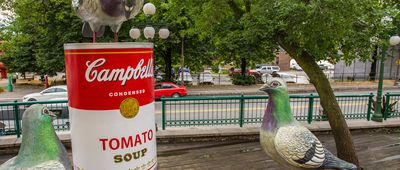Imagine walking through a lush, prehistoric forest. The trees are teeming with fruits and nuts, the ground is covered with an assortment of plants, vegetation, and mushrooms. Now imagine having to decide which of these are safe to eat, and which will make you terribly ill, or even kill you. Sounds like a pretty risky guessing game, right? That's exactly the challenge our ancestors faced thousands of years ago.
Nature’s First Food Guide
Our early ancestors weren’t just randomly nibbling on everything they saw; they were keen observers. They watched what animals ate and fed their young — a survival tactic still used by many indigenous communities today, a study by the University of Saskatchewan found.
If a bird or a monkey ate a berry with no ill effects, chances are it was safe for humans, too. This wasn't foolproof, though, as some animals can eat things that are poisonous to humans. For example, birds can eat certain berries like the ones that grow on poison ivy, which are toxic to humans. While their digestive systems can handle the chemical compounds of the berries, ours cannot.
But some of our ancestors had to learn the hard way, and trial and error played a significant part. They might have tasted small amounts and waited to see if there were any adverse reactions. Over time, this knowledge became part of the collective wisdom passed down through generations. Here's how scientists believe early humans evolved when it came to their diets.
For more fun stories like this, please sign up for our free newsletters.
Trial and Error
While there might be speculation about questionable methods in the discovery of milk, the reality is, thankfully, far less disturbing. According to a study by Science ABC, "Our early ancestors were far more connected to the earth than most modern humans." This intrinsic understanding of the land, crops, and animals they raised gave them a "deep understanding of the plants and ecosystems where they lived." As they observed and learned what previous generations ate, they "absorbed that knowledge" and applied it to their own diets.
Related: 10 Foods You Should Never Eat Raw
Our taste buds were also trusty guides as their bodies built immunity, the study says. Many poisonous plants may have a bitter or unpleasant taste as nature’s way of saying “Do not eat this.” This natural aversion to certain tastes also helped our ancestors steer clear of potential dangers. "When they ingested a foreign macromolecule, it would have either killed them or not," the report notes, adding, "Those that survived and reproduced were those with the programmed sensitivity for certain compounds that were not fatal."
Beefin' Up
As prehistoric climates fluctuated, traditional plant-based food sources may have become scarce. This evolving landscape could have pushed early humans to explore new dietary options for survival, a study by the Smithsonian notes. The discovery of meat as a rich source of protein and essential nutrients, such as B vitamins and iron, would have been a significant evolutionary advantage.
"By about two and a half million years ago, early humans started to occasionally eat meat," Paleoanthropologist Briana Pobiner, told the museum and research complex. "By probably about a million and a half years ago, humans started to get the better parts of animals. They shifted from just scavenging the leftovers to maybe getting earlier access to carcasses."
The consumption of meat could have also been influenced by observing carnivorous animals and realizing the sustenance it provided, says Pobiner. This shift not only offered a more calorie-dense diet by supporting the energy demands of an increasingly larger brain, but also marked a pivotal point in human evolution by influencing social behaviors, hunting skills, and tool-making.
Passing Down the Menu
As human societies evolved and our ancestors scattered across the globe, the knowledge of what was edible and what wasn’t became a crucial part of cultural heritage. This information was then passed down orally or through experience — often in the form of food taboos or culinary traditions, says Pobiner.
Fast forward to today, and science has taken over much of the guesswork. Thanks to advances in science and medicine, we now have a much better understanding of what makes something toxic. But this vast knowledge started with our ancestors’ curiosity, observation, and a healthy dose of bravery.
The Bottom Line
The next time you enjoy a meal, spare a thought for our ancient forebears. Their culinary experiments and discoveries laid the groundwork for our rich and diverse diet today. From foraging in forests to shopping in supermarkets, the journey of food discovery has been a remarkable one — guided by necessity, curiosity, and perhaps a dash of prehistoric "truth or dare."

 Photo credit: ValentynVolkov/istockphoto
Photo credit: ValentynVolkov/istockphoto Photo credit: monticelllo/istockphoto
Photo credit: monticelllo/istockphoto






